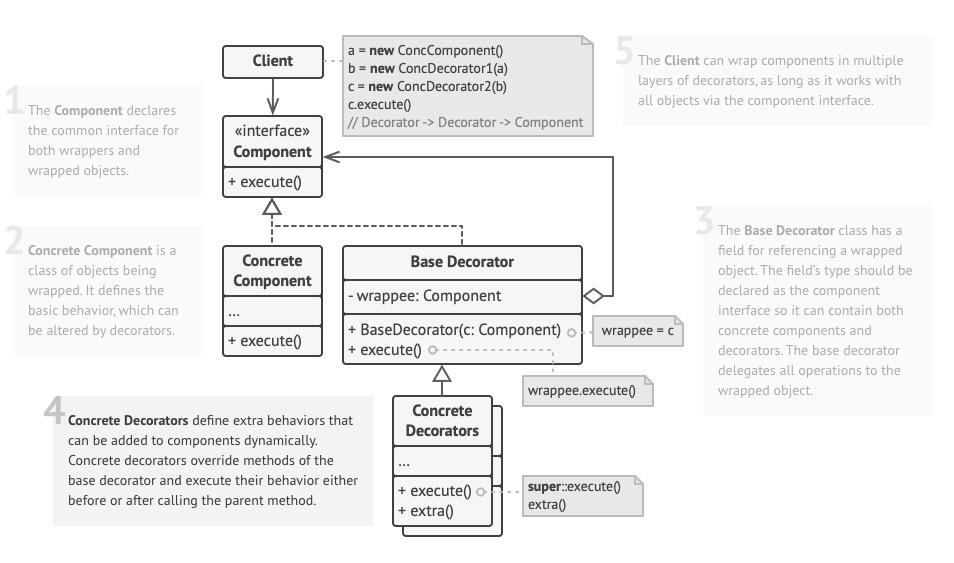简介
装饰器模式可以在目标对象原有的基础上,添加其他功能,实现动态增强。
需要明确的是代理模式也有类似的作用,而装饰器模式与代理模式最大的不同在于,装饰器模式下,对目标对象设置增强的权利交给了 client,即 client 先要得到目标对象,之后决定要用哪些装饰器给目标对象增强,一层层嵌套。
具体来说比如 Java 的 IO 操作,一般需要先 new 一个目标对象 FileInputStream,之后将其作为参数传给 BufferedInputStream 即可实现有 buffer 增强功能 InputStream。
装饰器类和被装饰类应该实现同一接口,这样可以保证被装饰器增强后的类的调用方式与之前一直,且支持无限次装饰调用。
装饰器是典型的组合优于继承的例子,试想如果用继承来实现增强的话,每有一个增强项,都需要重写一个类,而支持多种增强项的类则需要继承多次。
角色
类图
图中所示,Component 是共有的接口,Concrete Component 是被装饰的类,Concrete Decorators 装饰器类。装饰器类接收 Component 为参数,execute 方法即增强方法。
类图
代码
interface Component{ public function operation(): string;}
class ConcreteComponent implements Component{ public function operation(): string { return "ConcreteComponent"; }}
class Decorator implements Component{ protected $component;
public function __construct(Component $component) { $this->component = $component; }
public function operation(): string { return $this->component->operation(); }}
class ConcreteDecoratorA extends Decorator{ public function operation(): string { return "ConcreteDecoratorA(" . parent::operation() . ")"; }}
class ConcreteDecoratorB extends Decorator{ public function operation(): string { return "ConcreteDecoratorB(" . parent::operation() . ")"; }}
function clientCode(Component $component){ echo "RESULT: " . $component->operation() . "\n";}
$simple = new ConcreteComponent();echo "Client: I've got a simple component:\n";clientCode($simple);
echo "\n";
$decorator1 = new ConcreteDecoratorA($simple);$decorator2 = new ConcreteDecoratorB($decorator1);echo "Client: Now I've got a decorated component:\n";clientCode($decorator2);
复制代码
output:
Client: I've got a simple component:RESULT: ConcreteComponent
Client: Now I've got a decorated component:RESULT: ConcreteDecoratorB(ConcreteDecoratorA(ConcreteComponent))
复制代码












评论